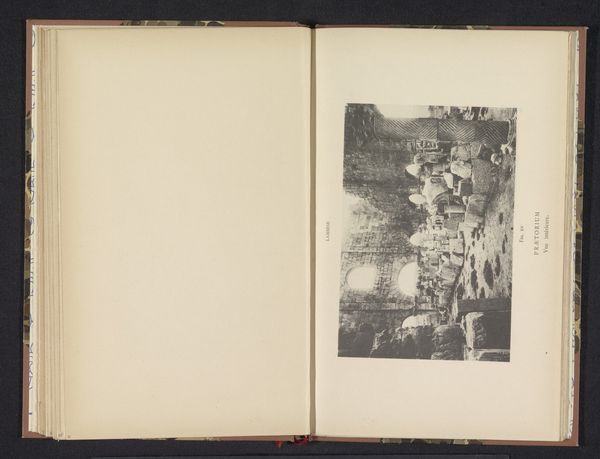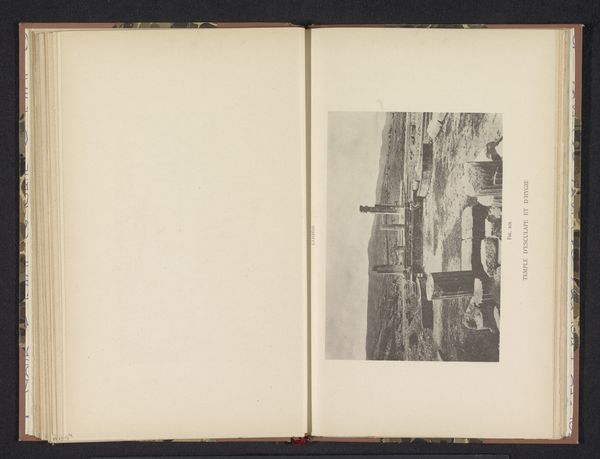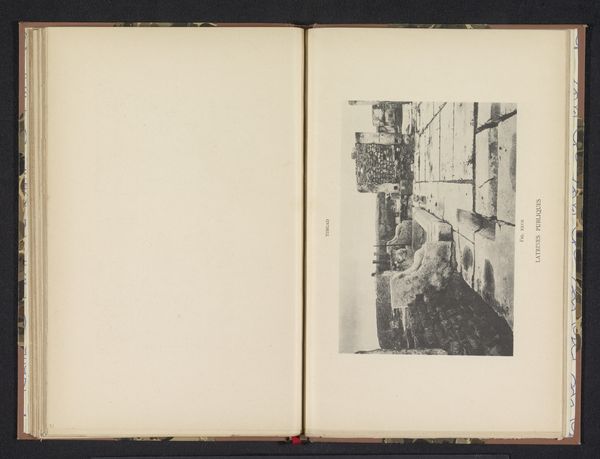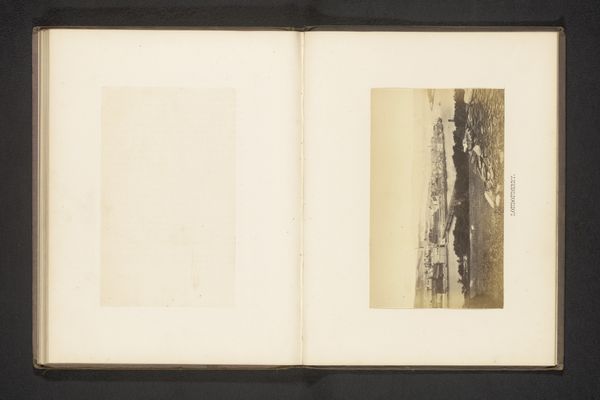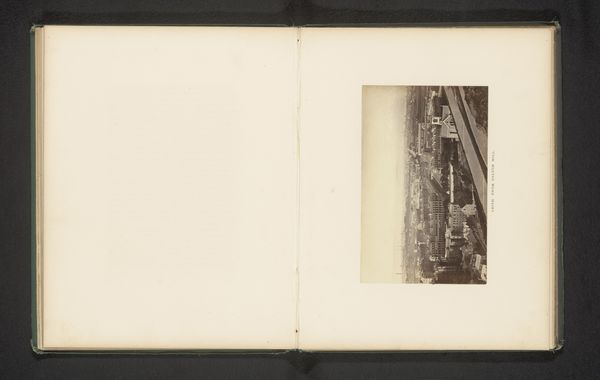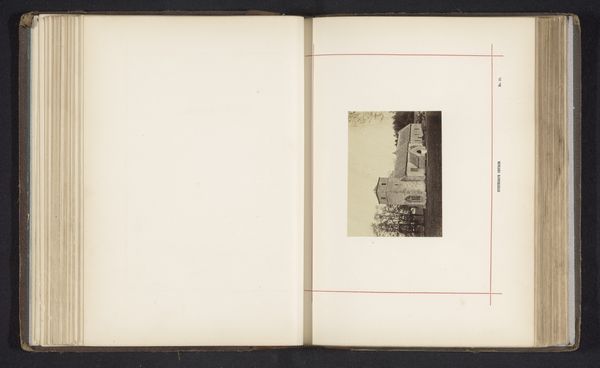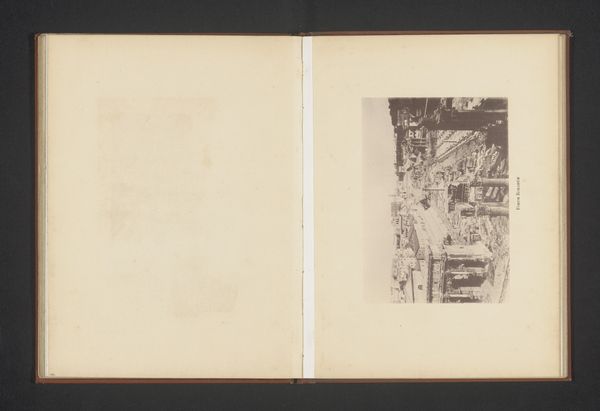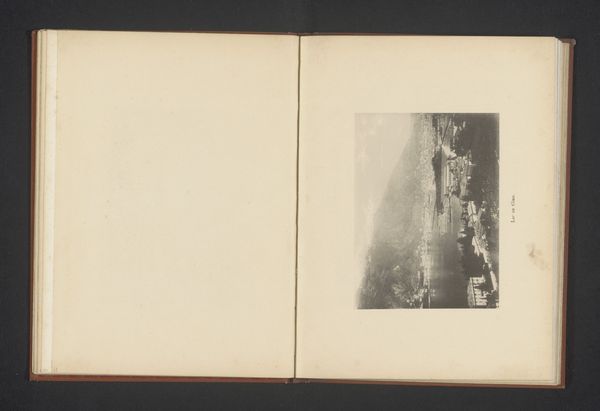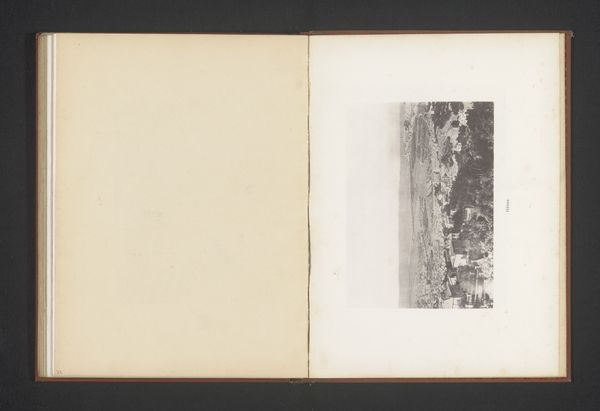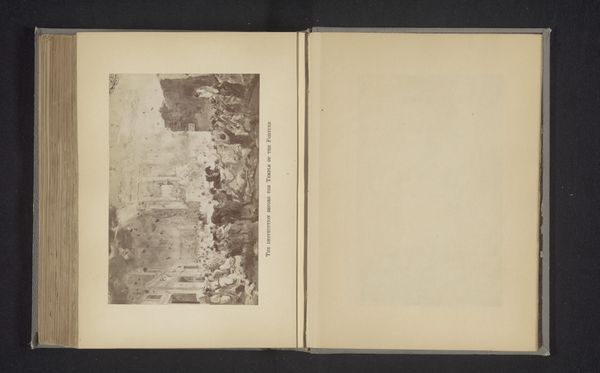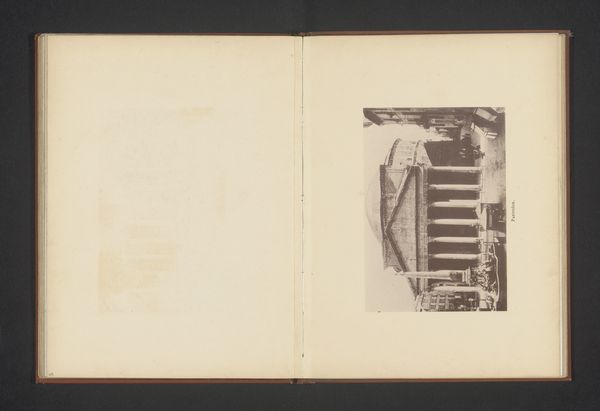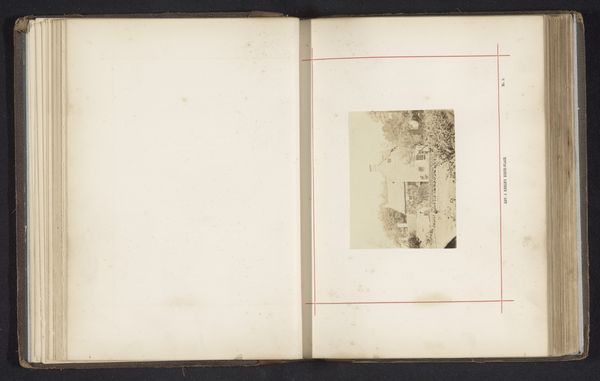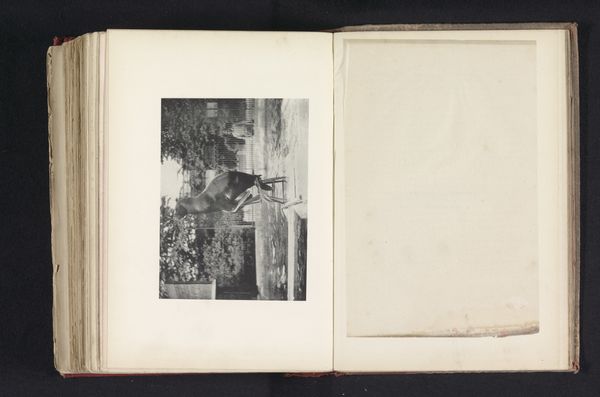
Gezicht op de ruïne van een Romeins poortgebouw bij Lambaesis in Algerije before 1894
0:00
0:00
print, photography, architecture
# print
#
landscape
#
photography
#
romanesque
#
ancient-mediterranean
#
column
#
cityscape
#
watercolor
#
architecture
Dimensions: height 105 mm, width 156 mm
Copyright: Rijks Museum: Open Domain
Curator: This is a print depicting a photograph titled "Gezicht op de ruïne van een Romeins poortgebouw bij Lambaesis in Algerije," taken sometime before 1894. Editor: Immediately, I'm struck by the sheer weight of those stone blocks. You can almost feel the layers of dust and time clinging to them. It looks immense, even in its ruined state. Curator: Indeed, Lambaesis was a significant Roman military camp, and this image captures a fragment of that imperial presence. It speaks to the reach of Roman power and its enduring legacy in North Africa, long after the empire's decline. Photography at this time also played a key role in documentation and asserting colonial narratives. Editor: I'm curious about the photographic process itself. Given the period, what would it have taken to haul the equipment and chemicals out to a place like Lambaesis? Think of the labor, the sheer effort in capturing this image – not just of the empire then, but of its residue later. Curator: The logistics would have been considerable, marking this photograph as more than just a simple depiction. It acts as evidence, both of the site's existence and of the photographer's presence and, by extension, of a continuing European interest in North Africa. Editor: I'm also pondering the materiality of those ruins, the types of stone. You know, where they sourced it and the organization needed to quarry, transport, and carve such quantities. It's a testament to Roman engineering as much as Roman authority. Curator: Precisely. The photograph emphasizes the permanence of these structures. And for contemporary audiences, its availability as a widely disseminated print underscored a narrative of Roman civilization that informed European self-perception. It's also interesting to note the aesthetic choice – the landscape approach. The columns really create verticality as their design pushes beyond the bounds of a standard landscape. Editor: I agree. To see something built to last essentially becoming part of the land, disintegrating under sun and rain - that is compelling material for photography as an industry. There is decay and growth intertwined as it has stood against these very elements that tried to break it down. Curator: This photograph gives a unique insight into a place that had social and political impact way before this image was captured, and even now. Editor: Absolutely, and considering its materiality, it continues to impact the cultural view we get on these events today.
Comments
No comments
Be the first to comment and join the conversation on the ultimate creative platform.
